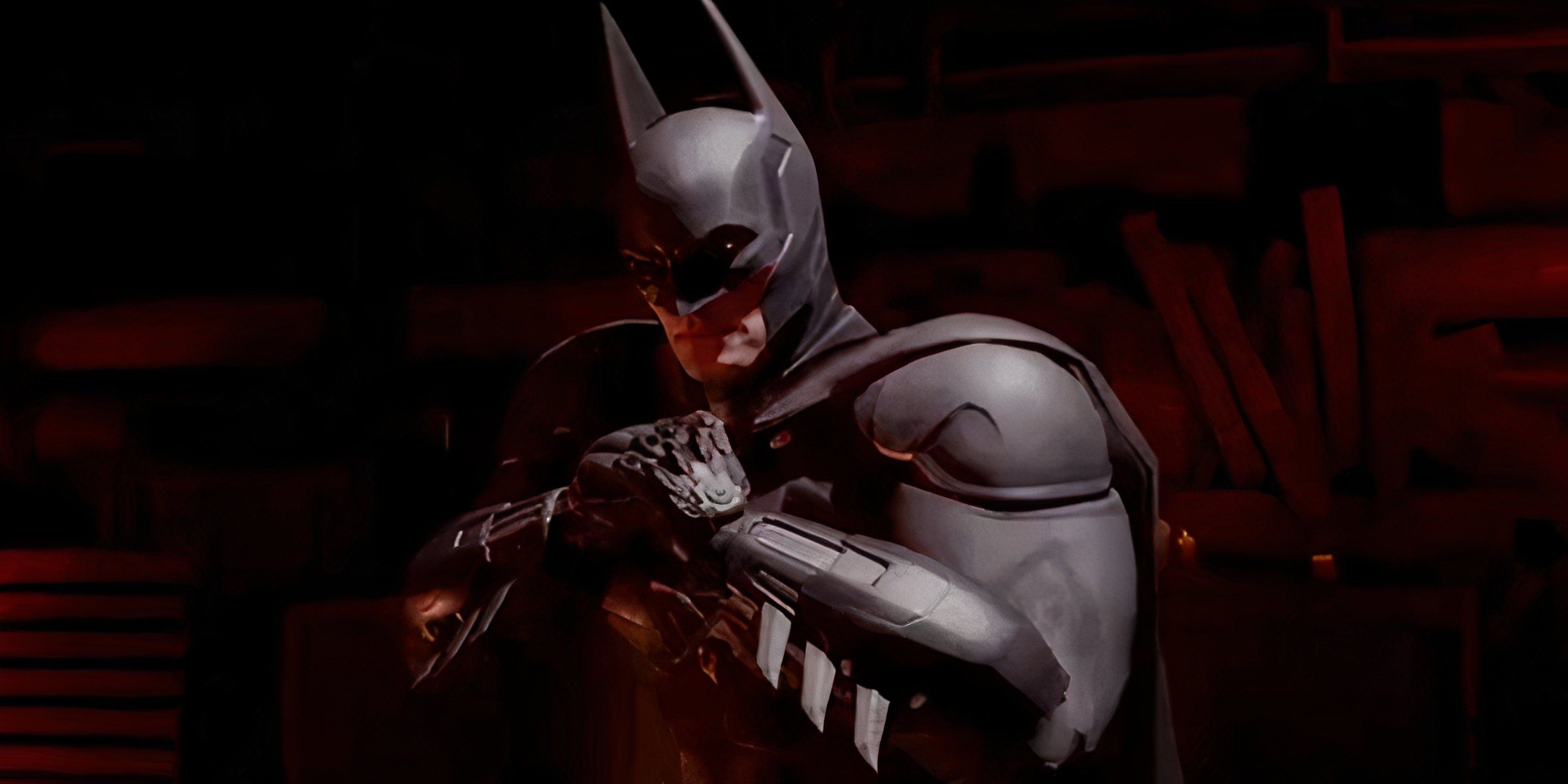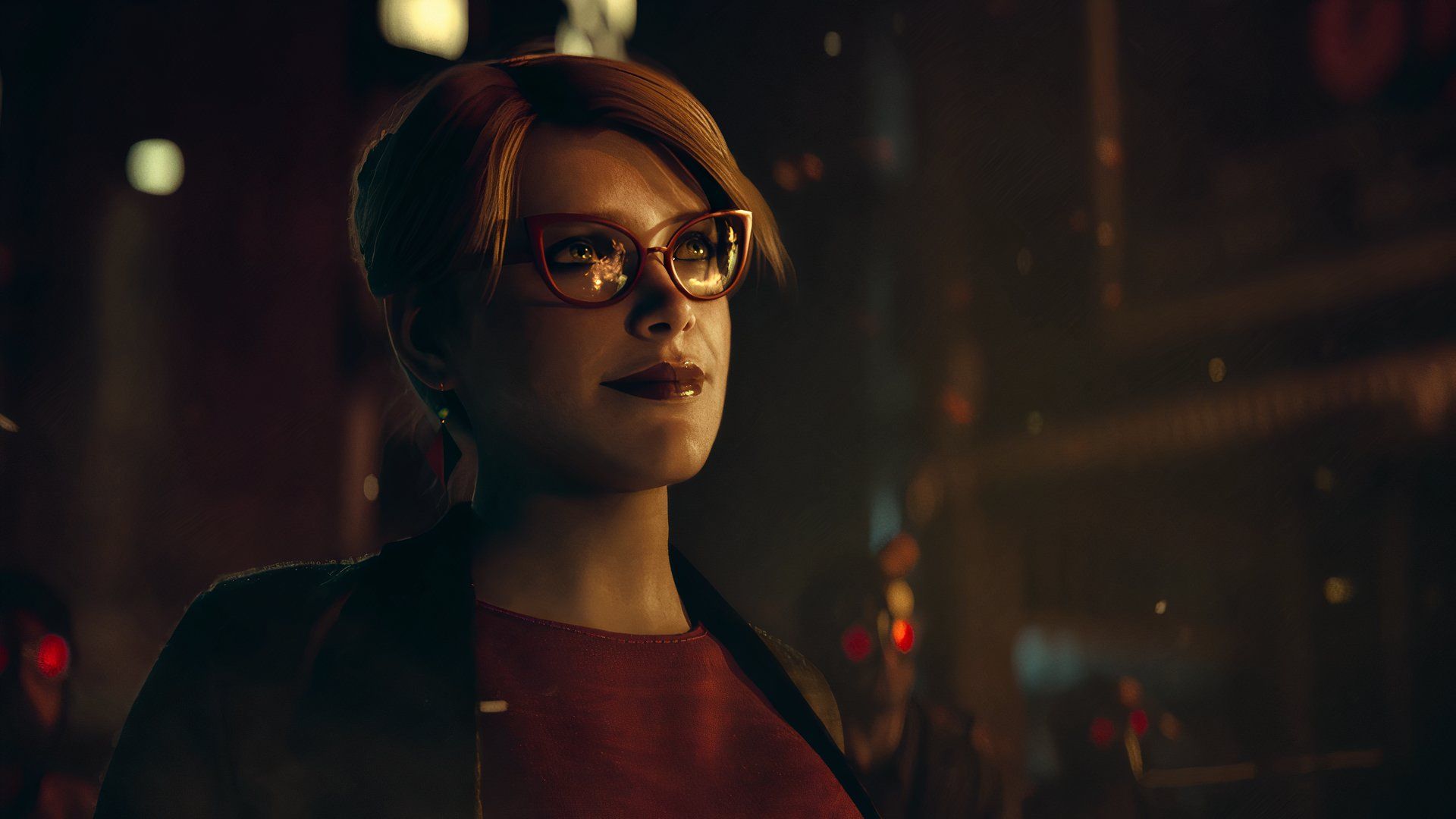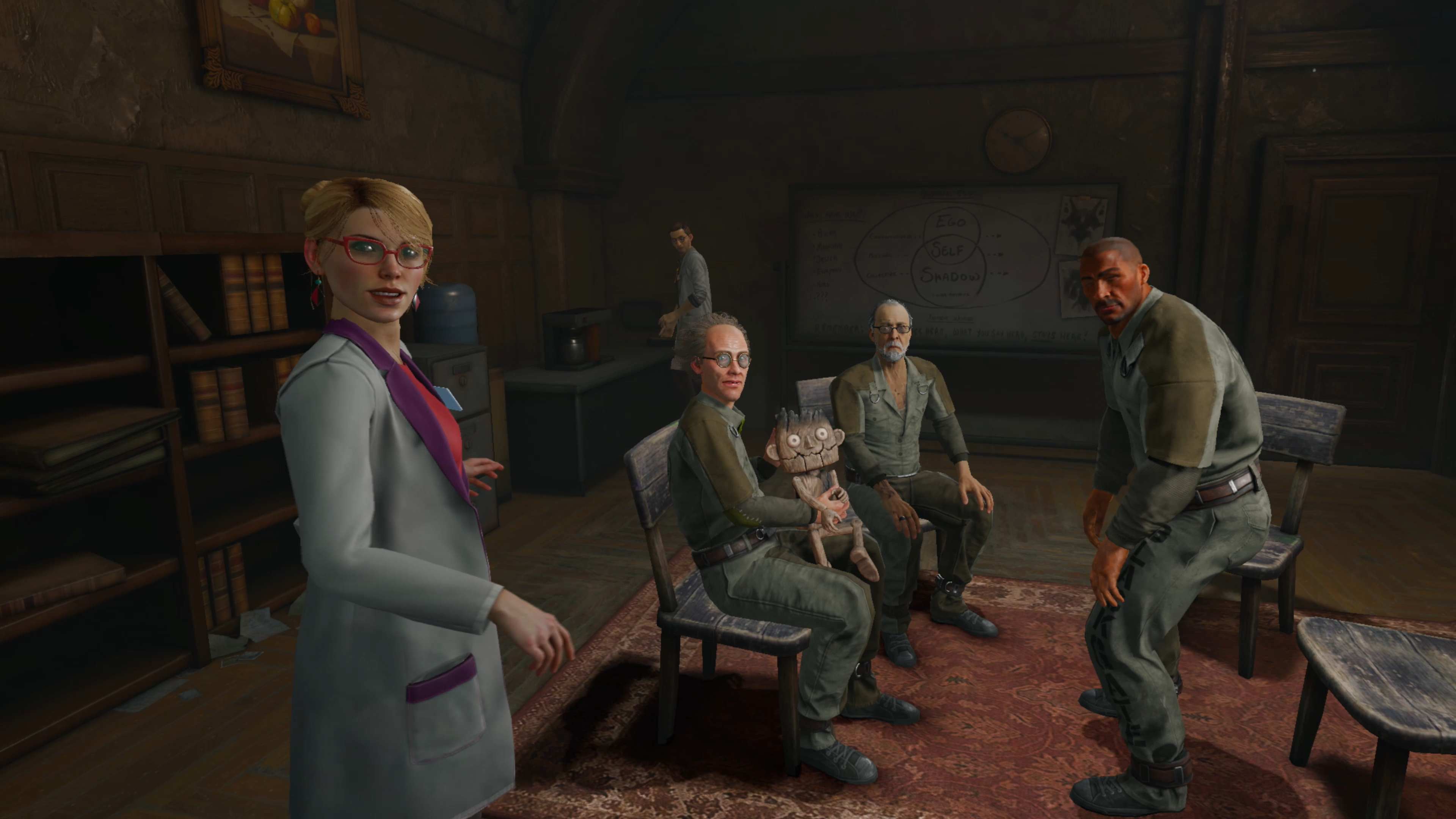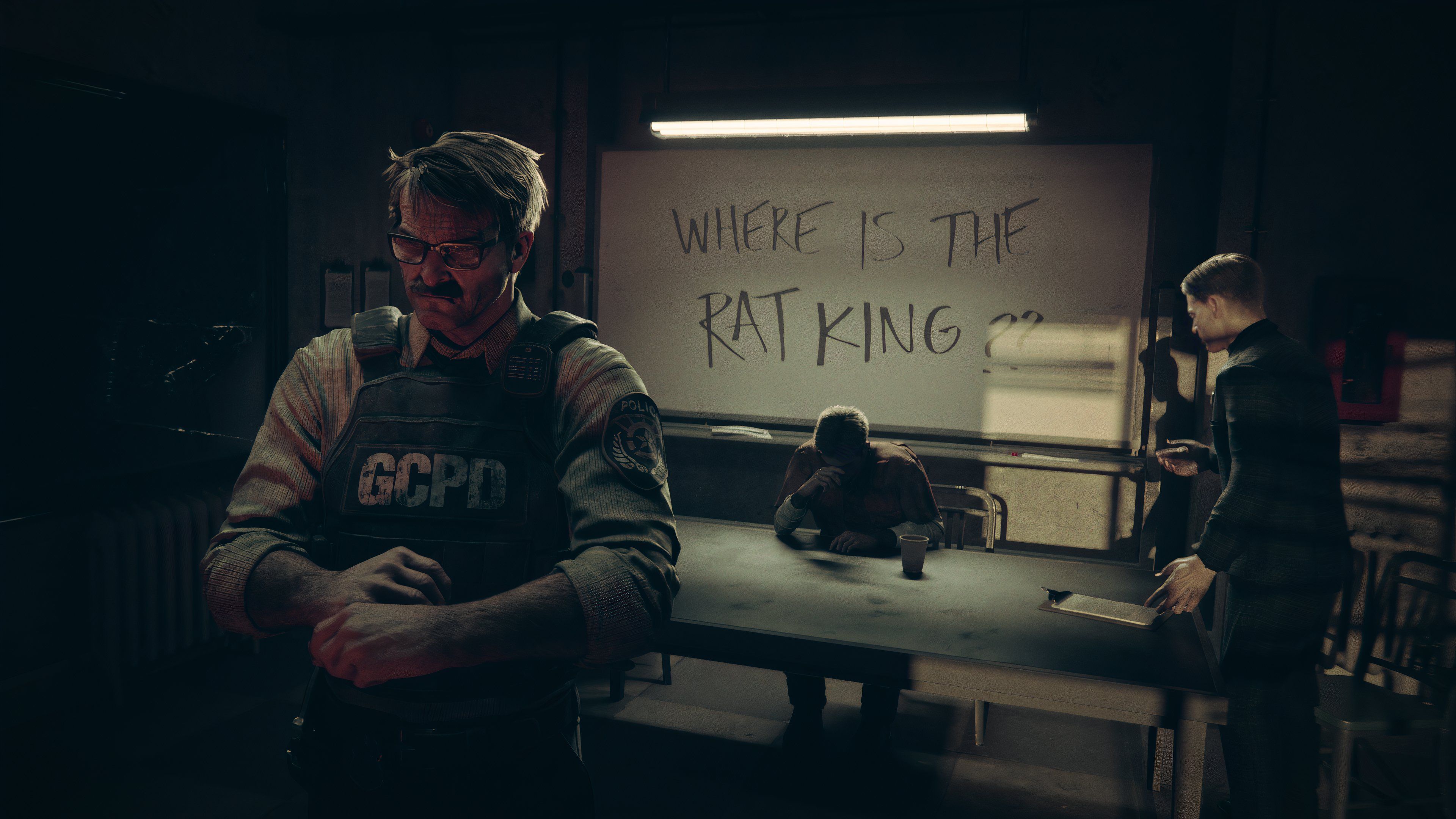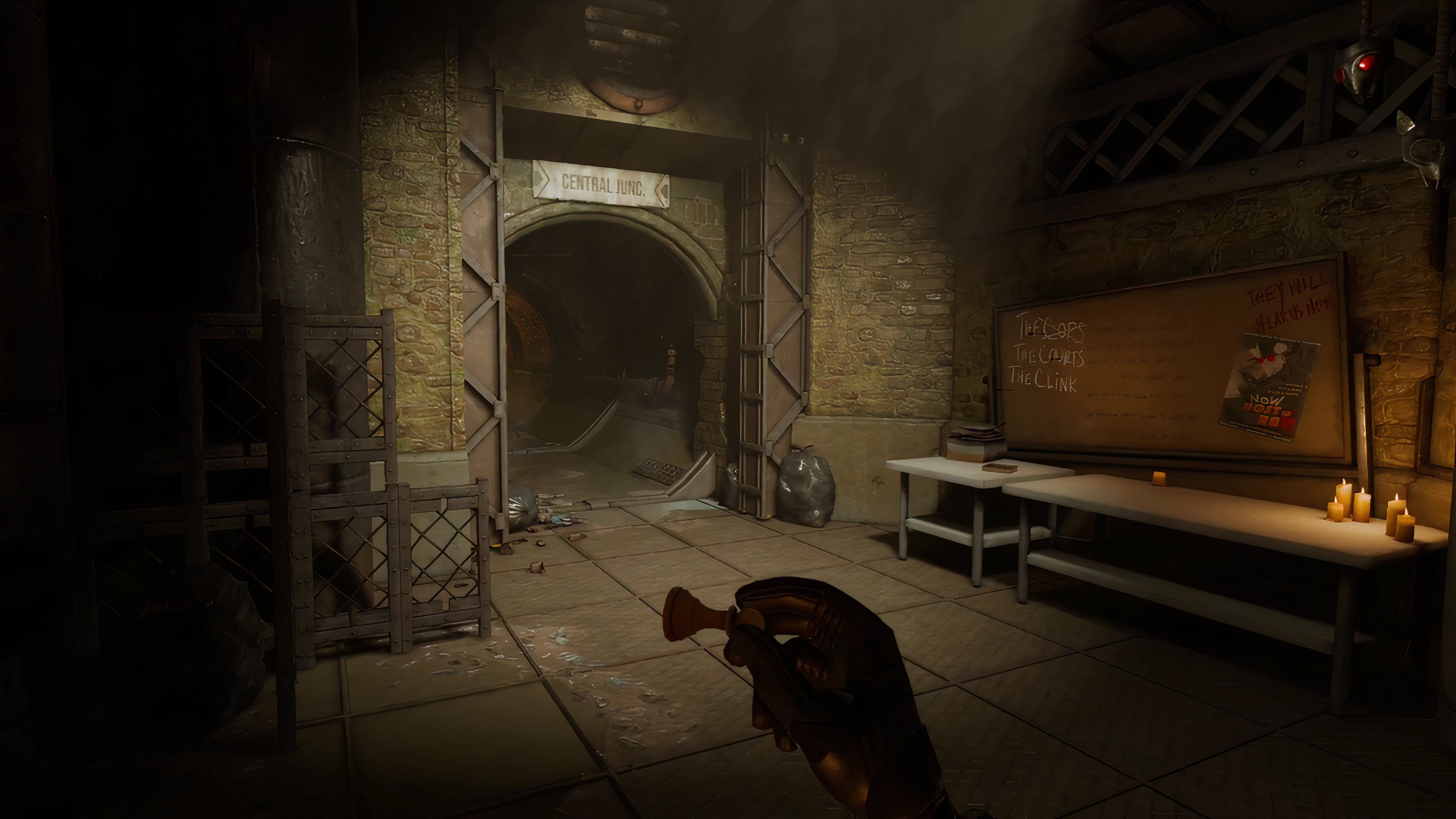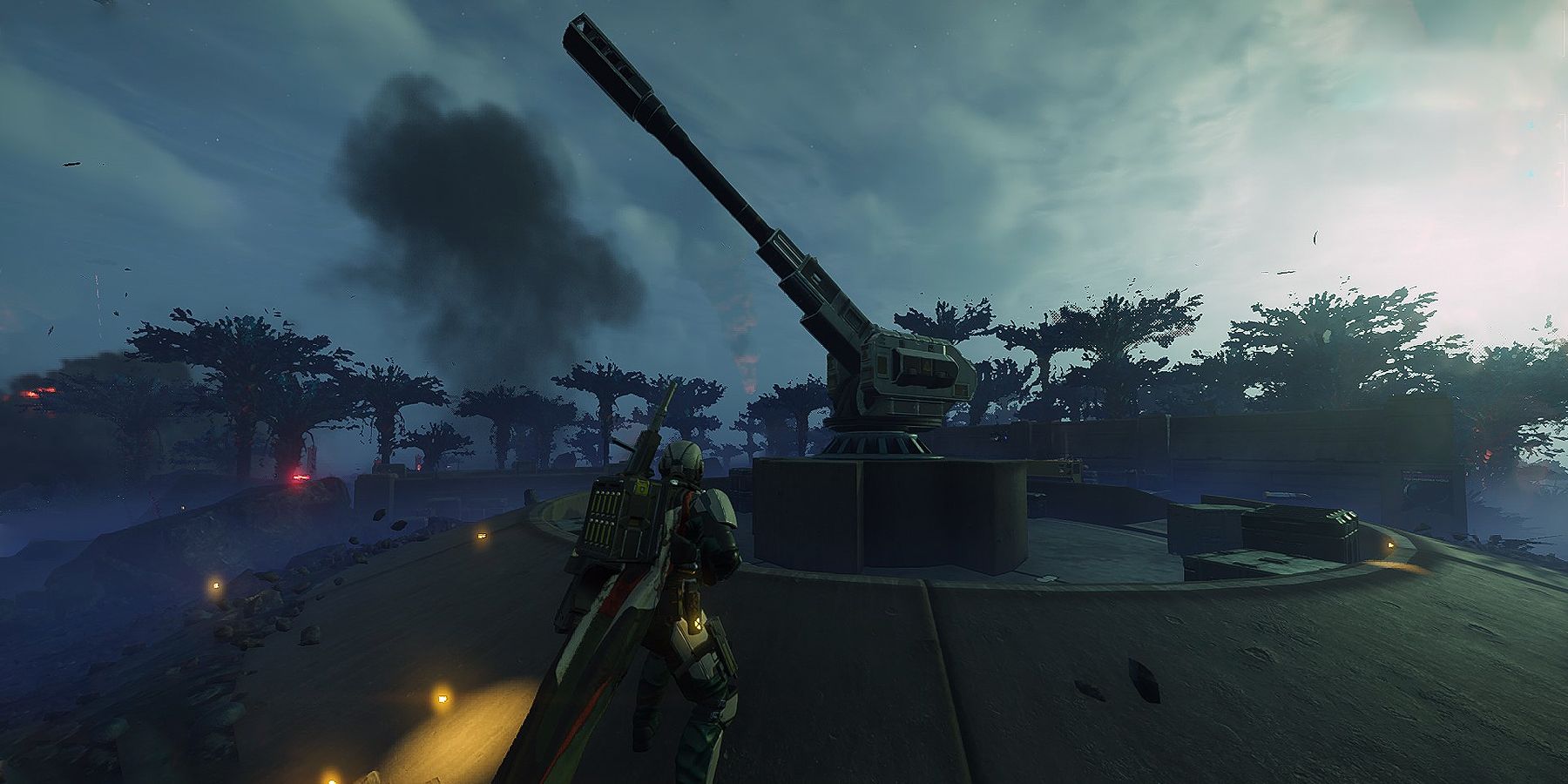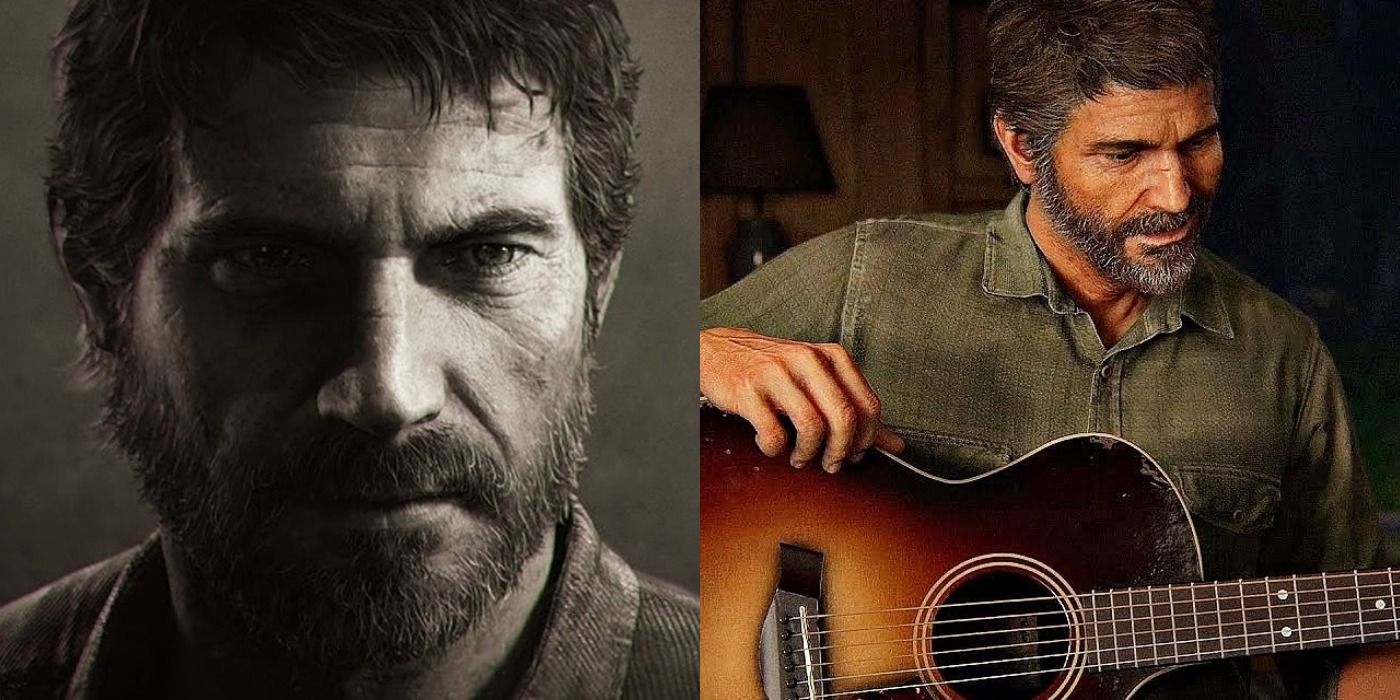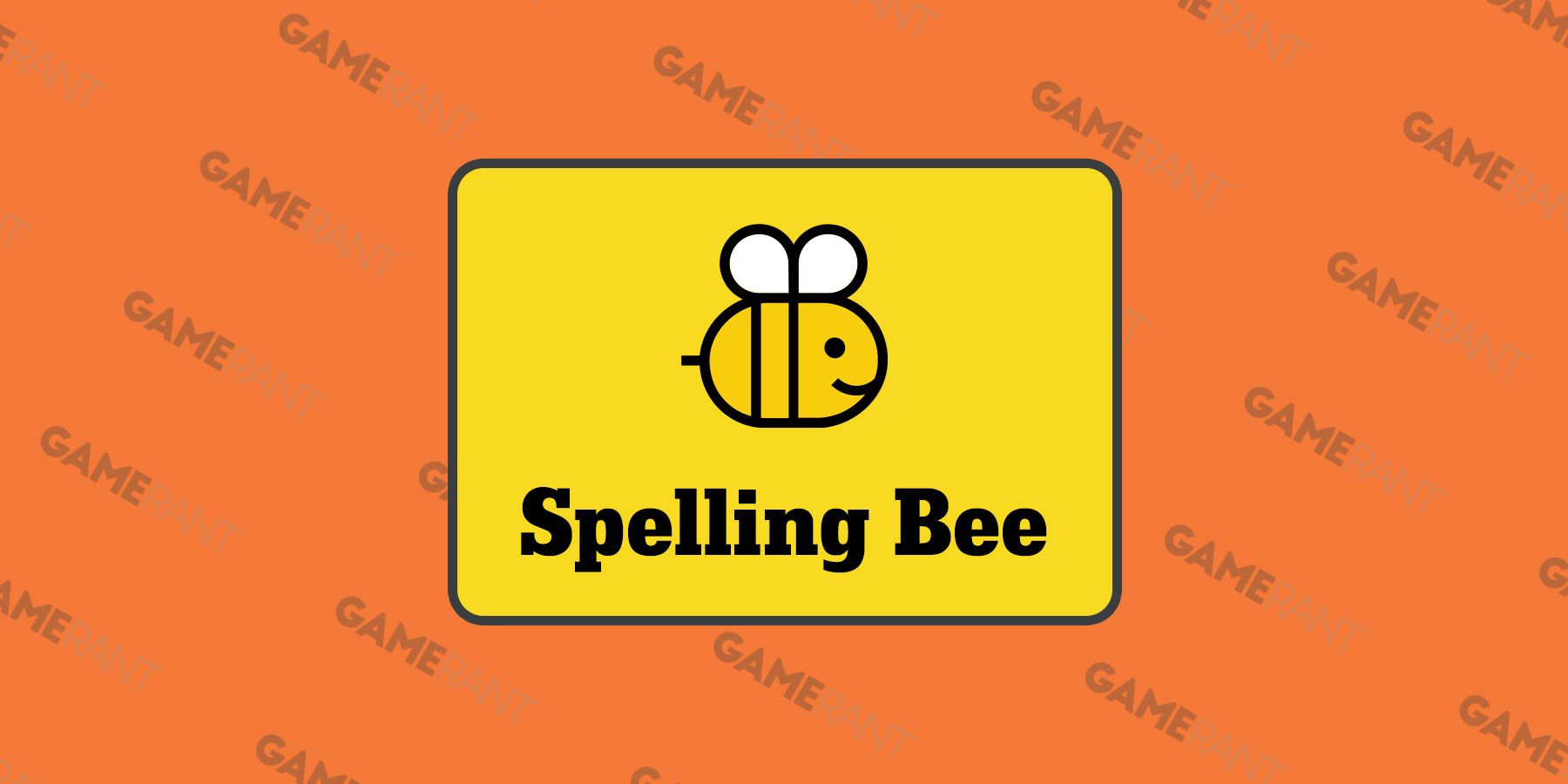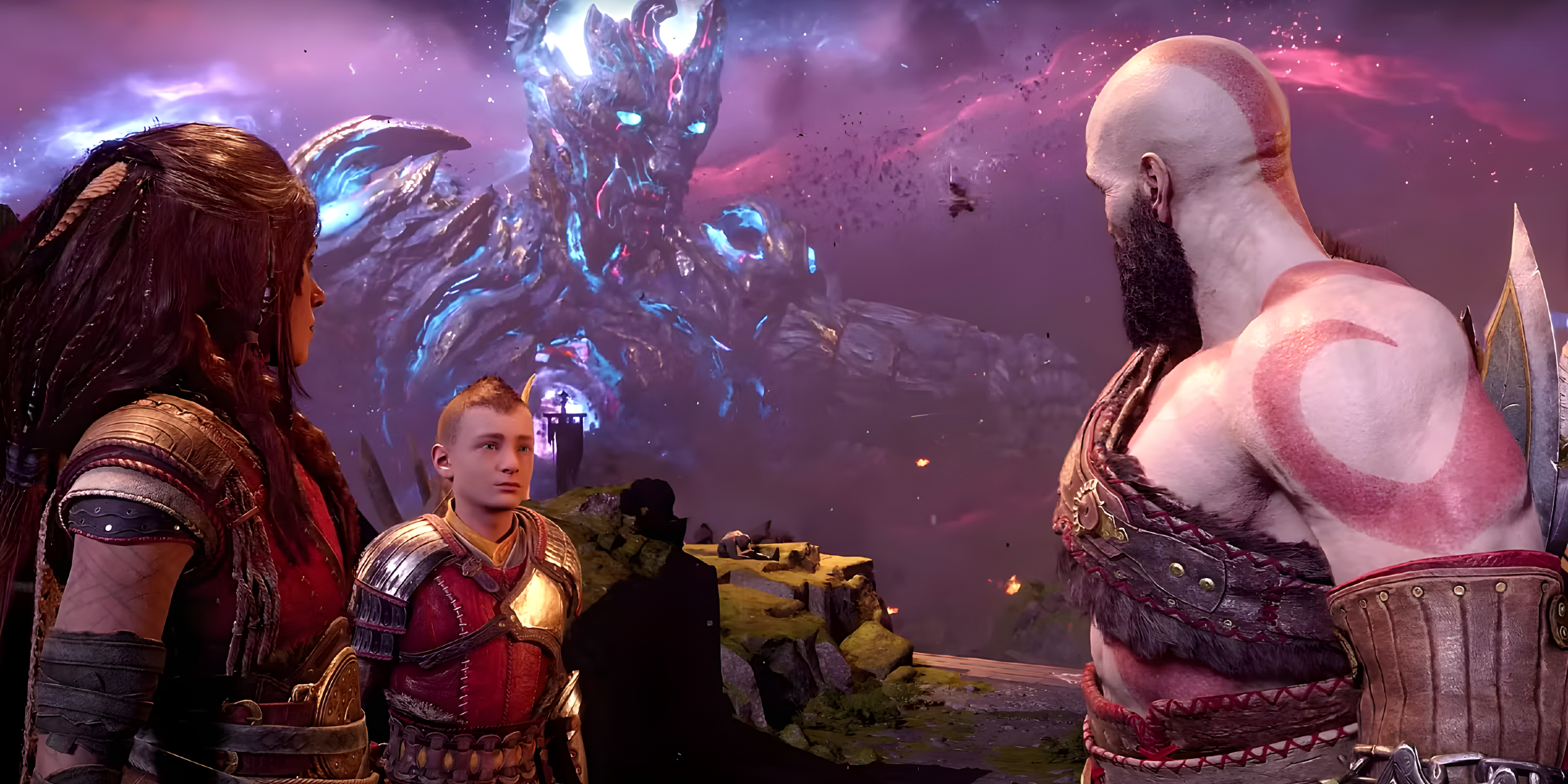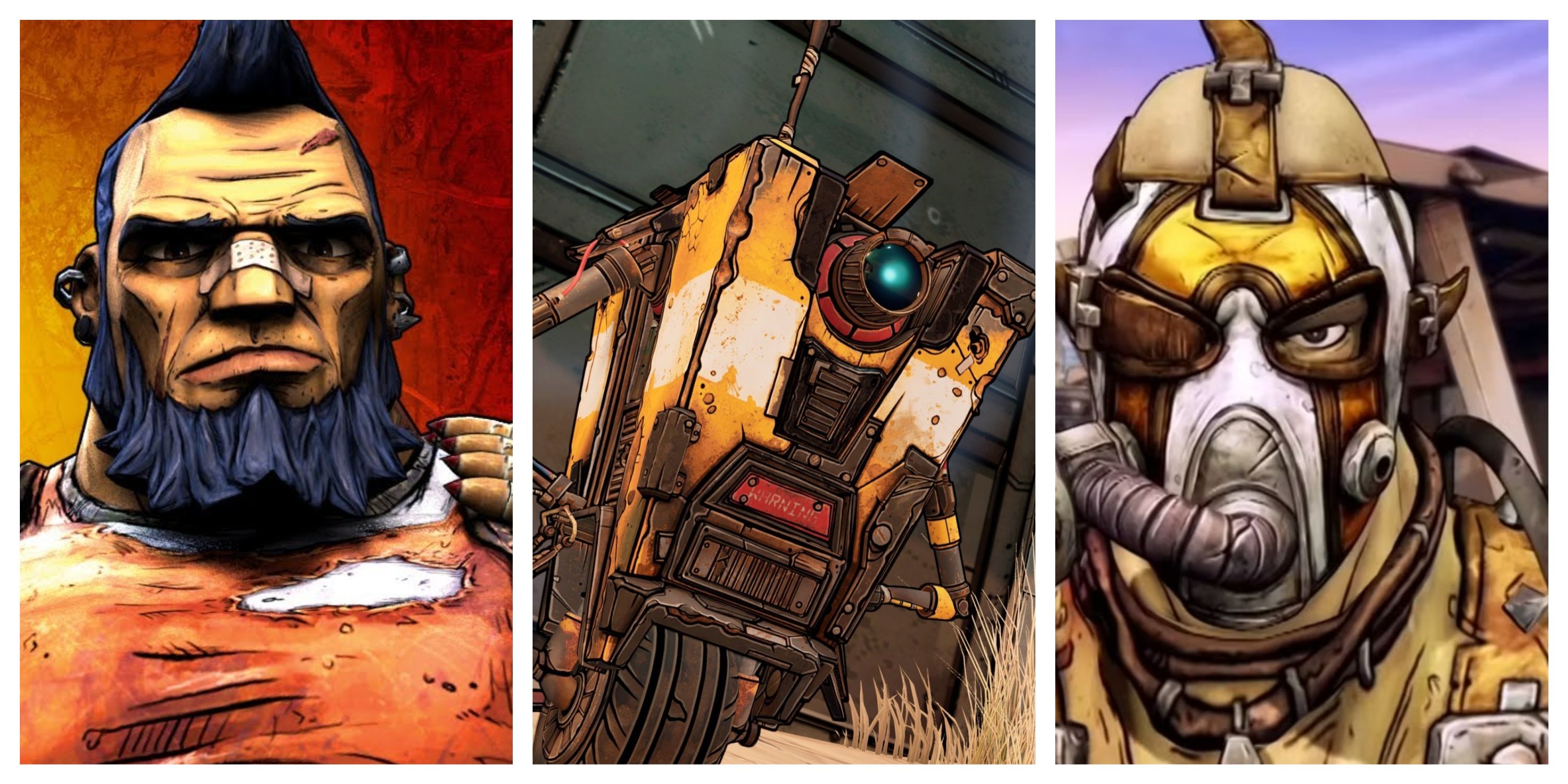Batman: Arkham Shadow recently revealed its release date of October 22 alongside the fact that the game comes packaged with a pre-order/purchase of the Meta Quest 3/3S. Speculation is rampant about whom the Rat King may be while combat and predator gameplay has now been showcased thoroughly, and in less than a month it’ll be exciting to see how the story unfolds and where Batman: Arkham Shadow leaves off for a possible future installment to pick up from.
Game Rant spoke with Camouflaj head of studio and game director Ryan Payton as the studio was preparing to unveil that Batman: Arkham Shadow will have challenge maps for combat and predator encounters. Speaking about this challenge mode and how it almost didn’t make it in for launch, Payton also discussed the game more generally to address the interplay between gameplay and story beats, what players should expect from the campaign’s narrative direction and the Rat King specifically, and fun lore-related features in Shadow that Camouflaj is divulging for the first time. The following interview was edited for brevity and clarity.
Batman: Arkham Shadow Features Combat and Predator Challenge Maps at Launch
Payton: We’re excited to be able to reveal that, in large part thanks to the community’s request for this feature, we will have challenge maps—both combat and predator—that launch alongside the game. This was not part of the original plan developing the title.
That feature set is something that we’ve been iterating on for years, and it’s something that’s been really fun for the team to be able to compete with one another to get higher scores. It’s a great way to just jump in and experience the combat, or experience the predator encounters, and it’s really fun also if you want to introduce the game to somebody really quickly—just give them the headset and they get instantly into the action.
It was really on the bubble from a development perspective a few months back but, but once we announced Arkham Shadow and through the community’s voice hearing just how passionately they were hoping the game would ship with it, we put the extra effort in and all credit goes to the team for squeezing in the time required to ship with the challenge maps for both combat and predator. Our hope is to be able to update it with additional maps with free, post-release content updates.
Q: How do you stack up against other developers on combat and predator? Do you feel one’s harder than the other?
Payton: I believe the predator challenges are a little more difficult than the combat challenges but that might just be me, I could be a little bit impatient despite the fact that I’ve been working on stealth games for pretty much my entire career, and I stack up surprisingly well, Jared, I have to say. I love that the leaderboard feature’s now enabled within the dev build, and I wasn’t sure I was going to stack up, but I’m quite proud of my score. I’m also super excited to see what the community does because they’re going to blow away all of our scores probably on the first day, I would assume [laughs].
Batman: Arkham Shadow’s Design Caters to Players New and Old in the Arkhamverse and VR
Q: The last Arkham game came out almost 10 years ago and was seemingly intended to conclude the saga, at least until Suicide Squad: Kill the Justice League arrived. Knowing that Arkham Shadow may well be a lot of players’ first foray into the Arkhamverse, was there any pressure for Shadow to cater to new audiences while also being neck-deep in so much established lore and context between the games that sandwich it?
Payton: I think you’re touching on one of the great challenges we had in creating the story for Batman: Arkham Shadow in that we wanted to respect the existing games in the franchise. We’re huge fans of them, we’ve pumped so much lore from and references to the other Arkham titles into Arkham Shadow, but at the same time we also have to make sure that the game is a comfortable entry point for new players into the franchise.
I think there are two things we have going for us: one is the fact that our story is set very early on in Batman’s career, so from the timeline coming off of six months past the events of the earliest game in the timeline, which is Batman: Arkham Origins. I think that helps players embody Batman physically through the power of VR and be able to get within the mindset without all that baggage that he would have if this was later in the franchise or timeline.
Secondly, it’s related to what we announced at Meta Connect, which is the Quest 3S at a more affordable price point for people who want to get into VR. It’s an amazing headset, Batman: Arkham Shadow comes bundled with it as well as the Quest 3, and we believe this is going to be the first experience that many people around the world have playing VR.
Because the game comes bundled, we believe that Batman: Arkham Shadow is going to be part of, for many people, their first experience playing a VR game, so we want to make sure it’s a comfortable experience, that they don’t have to worry about having played the previous Arkham games or not, and they can just put the headset on, look at their bodies, see that they’re Batman, hear Roger Craig Smith’s voice as Batman, and go into the story without having to worry about having to do any homework ahead of time.
Q: Is there an Arkham game that you’ve come to appreciate more from a creative or design perspective having now developed your own?
Payton: This is going to come across as a humble brag but, back in 2020, when we started development on the game, the internet wasn’t as in love with Batman: Arkham Origins as it is right now. I remember playing the game and reading all the different forum comments about it as time went on, and watching these different YouTube videos in which people were starting to kind of wake up to how great of a game that actually was, and perhaps was underappreciated at the time when it was released.
I remember back in 2020, encouraging the team to not just only play Arkham Asylum, Arkham City, Arkham Knight, and Arkham VR—all the Rocksteady titles. Not only because our story is going to be close to Origins in the timeline but I think we have a lot to learn from just the creative output of Origins, whether it’s the power in its storytelling, Roger Craig Smith’s performance, the incredible boss battles—there’s just so much to celebrate about Origins, and so when you play the full experience of Batman: Arkham Shadow I think you’ll see not only from a story perspective but from lots of different facets we took a lot of inspiration from that game.
Q: Besides the fact that it takes place over more than a single night, Shadow seems to adhere fairly tightly to the Arkham formula. Are there any other notable franchise traditions Shadow breaks that you can speak to at the moment?
Payton: The Gel Launcher functions differently from the Rocksteady and WB Montreal titles in that it was built to lean into the core strengths of VR and make that a comfortable experience for players, and I’m really happy with the design of that gadget. Another gadget that we are deviating quite significantly from its flatscreen adaptation is the batarang—the fact that it’s a single batarang; it doesn’t function like infinite ninja stars, for example. It’s more akin to a boomerang from the 3D Zelda titles or maybe even the axe from God of War, which was something of an inspiration for us.
Players have to be mindful that they only have one batarang. They pull it off of their chest like the Robert Pattinson Batman in the Matt Reeves film. That was a pretty big departure, I would say, and quite controversial at the time within the studio as we were exploring these things.
As you can imagine, because we have veteran Arkham developers working full time at Camouflaj, such as Bill Green and Sophie [Leal-Bolea], whenever we butt up against something that is breaking from tradition we’ve had deep discussions about whether or not it was worth deviating. Anything you’re seeing in the game is the result of a lot of those discussions, and there are many things that I thought we needed to do or wanted to do early on in development, that as I learned about what it takes to make an authentic Arkham game I actually kind of backed away from a lot of those more radical ideas.
How VR Interactivity Melds with Cinematics in Batman: Arkham Shadow
Q: You’ve mentioned that when players meet Harvey Dent as Batman they’ll have the option to actively participate in the story beat by electing to shake his hand or not. I’m wondering—especially if Bruce Wayne is meant to be pals with Harvey otherwise—how significantly choices like these may affect the narrative, if at all?
Payton: That’s a good question that I get from my colleagues within Camouflaj as well, which is, “How impactful are these choices that we’re presenting to the player?” Typically, we’re not building a Telltale-style game that has a big, branching story. In a sense, it’s more experiential but also meant to pique the curiosity of players.
I know there are many Arkham players out there who love to play the games repeatedly from start to finish and I think part of the fun is to get a different perspective or to get additional information from characters by choosing different dialogue options—which we haven’t talked about yet but, just like Iron Man VR, we have dialogue options—and also opportunities for players to actively participate in something like shaking Harvey Dent’s hand or refraining from it and then seeing what happens. There might be a small tweak in the story depending on how players play, but I want to be careful and not suggest that it means drastically different endings and things like that.
Q: Referring to the pie chart comparisons between Arkham Asylum and Arkham Shadow you’ve revealed, could you ballpark what percentage of the ‘Cinematics’ slice is interactive as opposed to standard cutscenes?
Payton: Our ‘Cinematics’ slice is bigger in Arkham Shadow than it is in Arkham Asylum and I think that’s for a number of reasons. One is that I think it’s safe to say we have more story content than Arkham Asylum, but in that larger pie chart we count the seconds that you’re spending just in a story area.
Let me kind of unpack that task force office scene in which Batman follows Commissioner Gordon downstairs, and inside this GCPD task force office you’ve got District Attorney Harvey Dent there. We count that, from a cinematics perspective, the timer starts the moment you surprise Commissioner Gordon on the top of that building all the way until the player’s next objective is handed over to them, and they can grapple across to the next building and then go into the more standard Batman gameplay.
That time slice is probably longer than your typical real-time or sometimes pre-rendered cinematic that you would get in Arkham Asylum, for example, but it’s not all just cinematic, character-driven moments end-to-end because players do have an opportunity to move around those spaces, take in some of the environmental storytelling. We have bulletin boards up on the wall that players, if they so choose, can see different leads that they have on where they believe the Rat King may be, but that’s all optional for the player to explore and for players who want to just move forward with the story they can.
Batman: Arkham Shadow Asks ‘Where’ is the Rat King, Not ‘Who’ is the Rat King
Q: The Rat King is presumably playing the role of Shadow ’s main antagonist and other characters have had their actors revealed. Given that Dr. Jonathan Crane/Scarecrow has already been voiced by multiple actors in the franchise, can you shed any light on why his actor has been sworn to secrecy?
Payton: The truth of the matter is that I think we’ve been just waiting for the right moment to reveal the actor for Jonathan Crane, who eventually becomes Scarecrow in the franchise—may or may not become Scarecrow in Batman: Arkham Shadow, if you play the game you’ll find out—but there’s not any reason beyond that. We were so excited to be working with this really talented actor and we’re just waiting for the right moment, but there’s no kind of story or lore reason why.
You’re touching on a subject that I was hoping to kind of dive a little bit more deeply into because it’s something I’ve been reflecting on over the last few weeks… the story of the game was not designed as such to invite players, whether they’re playing the game or speculating about the game pre-release, about the identity of Rat King. It’s not a story that was designed as you would imagine perhaps a film like Usual Suspects was designed. Or even perhaps Arkham Knight to an extent.
We didn’t want to launch this kind of scavenger hunt because it’s really not what the story of Batman: Arkham Shadow is. Batman: Arkham Shadow is really about stopping the Rat King and yes, getting to figure out where he is operating from, and eventually figuring out who is behind all of this mayhem and anarchy within Gotham City is part of Batman’s objective, but it was not ever meant to be this big mystery that we invite either Batman or the players or the community to try to figure out before the game came out.
It wasn’t until we started to reveal more about Batman: Arkham Shadow that I realized that the community is used to this given their experience with anticipation building into Arkham Knight, and now upon further reflection it speaks to the power of the mystery box—J.J. Abrams’ ‘mystery box,’ right—and admittedly I think I was caught a little bit off guard to the degree of which fans are very curious about the identity of Rat King, which honestly was not really part of the initial design of the game’s story.
Where I come from with that, is how in Knight you’re trying to find out who the Arkham Knight is the entire time and that is what pushes that plot along other than Scarecrow, but for me it’s Origins as well where it’s Black Mask at the start and you find out he’s Joker. I think coming off of Origins is maybe where myself and a lot of people might be thinking, “What is the big plot twist, what is the big identity twist here?” If you’re saying the identity matters less than the pursuit of the Rat King then that’s interesting.
Payton: I’ll clarify that because I think you got it, but I’ll maybe reiterate what you’re saying. Origins and Knight are very different in terms of Batman’s pursuit. In Origins he wasn’t trying to find the true identity of Black Mask, right, but in Arkham Knight, I’m sure you remember, there’s these exchanges between Batman and Alfred and Batman is pleading with Alfred to do research to figure out who the Arkham Knight is. We do not have moments like that in Arkham Shadow, to be clear.
Batman is the World’s Greatest Detective. Of course, it’s part of the pursuit of this new villain to figure out where he’s operating from, where their base of operations is, and what their identity might be. But the main objective is not to identify the Rat King, it’s really to stop the Rat King.
Batman: Arkham Shadow is Brimming with Lore, Easter Eggs, and References
Q: Is the Batcave in Shadow the same one as in Origins ? I noticed it doesn’t look quite one-to-one and was wondering if there’s a bigger story there, or maybe it’s just an expansion or renovation?
Payton: I think it’s safe to say our Batcave is different, it’s a different location than the Batcave that players experience in Arkham Origins, so it’s not underneath Wayne Manor. It’s more akin to the Batcave from Arkham Asylum.
Something exclusive, if you’re interested—it’s not the biggest feature but it’s something we haven’t talked about. In our Batcave, we have a feature we’re borrowing from Arkham Knight which is the answering machine. So, as players progress through the campaign they can hit a button and hear these phone calls, these messages that are left for Bruce Wayne, which get increasingly intense as Bruce has been very preoccupied by his pursuit of the Rat King. That’s been a fun feature we’ve been working on and we are excited for people to dig deeper into it when they play the game.
And so is that more of a one-way, direct-to-Bruce Wayne messaging versus the payphone which you’re calling and hearing messages from other people in general?
Exactly, 100%, yeah. It’s a way for us to do more world-building, and another thing I haven’t talked about at all—but I’m willing to provide this information if you think it’s interesting for your readers—is that, like in City, we have radio stations for players to tune in to as well.
We’ve recorded lots of different radio programming from some really cool actors who I don’t think we’re going to reveal ahead of time. I think we’re just going to allow the players to uncover this as they play the game. Some deep-cut DC lore in there, and it’s just something for the fans that really enjoyed listening to these different clips within Arkham City. We have a very similar feature like that in Arkham Shadow.
[END]
Batman: Arkham Shadow launches on October 22 for Meta Quest 3/3S.
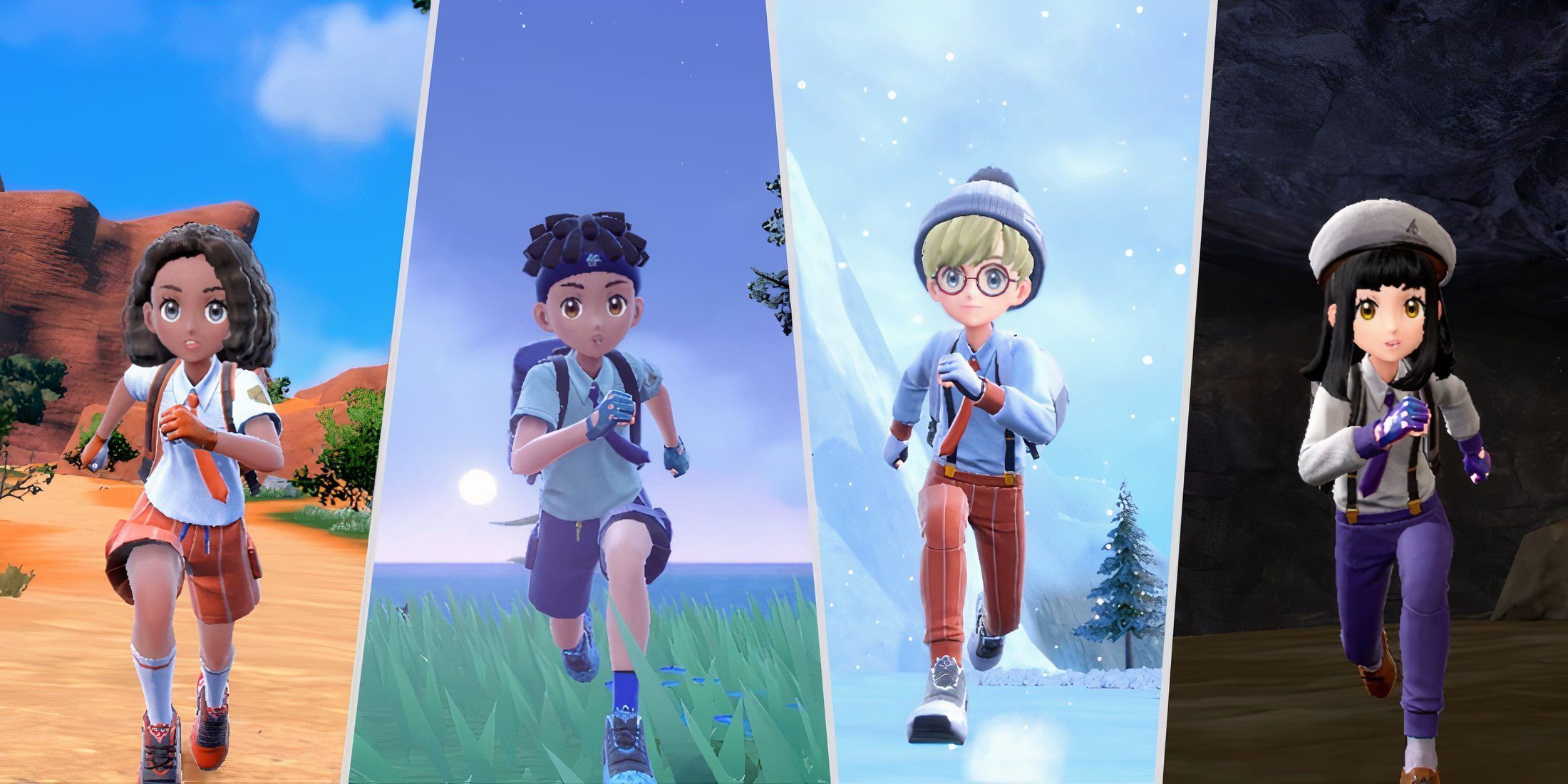
/cdn.vox-cdn.com/uploads/chorus_asset/file/25740556/Screenshot_2024_11_18_at_6.20.47_PM.jpeg)
